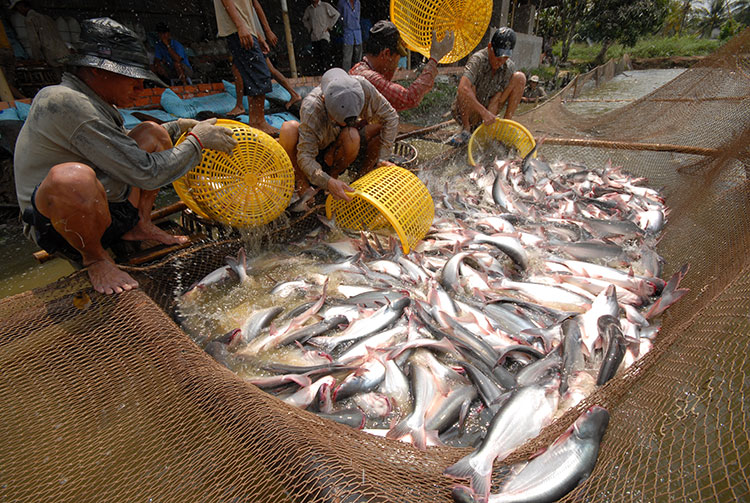Tien Giang aims for 33,000 tons of pangasius by 2025
According to the Department of Agriculture and Rural Development (DARD) of Tien Giang, the province is targeting 33,000 tons of pangasius by 2025, with an area of 110 hectares dedicated to pangasius farming.
Tien Giang, located in the Mekong Delta region, holds several advantages for pangasius farming. The province has three pangasius breeding facilities with around 22,500 parent fish (2,500 of which are sourced from the Institute of Aquaculture Research II), and 75 households are involved in a total of 240 hectares of pangasius fry production. In 2024, the province plans to produce 4.28 million pangasius fry and nurture 352 million fry for both local and external markets.

The total area for pangasius farming in the province is 133.74 hectares. This includes 77 hectares controlled by five processing companies, 56.74 hectares managed by 18 households, with 25 hectares under contract for sale to processing plants, and 5.63 hectares currently fallow. Additionally, 31.7 hectares of pangasius farming are certified under VietGAP and ASC standards.
In 2024, the province plans to stock 110.4 hectares, aiming for a harvest of about 33,070 tons, achieving 103% of the target and a 18% increase from the previous year. The pangasius is primarily used as raw material for export processing plants, with key markets including the EU, China, ASEAN countries, the Middle East, and other large markets like the US and Russia.
However, the local pangasius farming industry faces several challenges, including the small scale and fragmentation of breeding and fry-nurturing facilities. These operations often shift between different types of fish, leading to inconsistent production cycles, and are typically located in fruit orchards, which complicates management and monitoring. Additionally, traditional farming practices persist, and record-keeping remains inadequate, hindering traceability when necessary. The industry also continues to face issues related to the misuse of chemicals, antibiotics, and land animal drugs in aquaculture production, fry-nurturing, and farming.
A representative from Tien Giang’s DARD stated that by 2025, the province aims to produce 4,000 million pangasius fry, nurture 350 million fry, and farm 110 hectares, with a goal of achieving 33,000 tons of output.
To meet these goals, the DARD will continue to enforce regulations on breeding, fry-nurturing, feed production, and environmental management. Special attention will be paid to certifying facilities that meet the standards set forth in the 2017 Fisheries Law, the 2019 Government Decree No. 26/2019/ND-CP, and the 2024 amended Decree No. 37/2024/ND-CP.
Additionally, there will be efforts to improve the genetic quality of parent fish for faster growth and disease resistance, ensuring a consistent supply of high-quality fry and reducing production costs.
The development of pangasius farming will align with the central and provincial economic development plans for 2020-2025, with a vision to 2030. The focus will be on market-driven farming that integrates production with modern processing and consumption, creating competitive products that meet both domestic and export market demands.
The province will also maintain and expand pangasius farming by applying high-tech solutions, particularly good aquaculture practices (GAP, ASC, BAP), ensuring product safety and hygiene. The goal is to align development with environmental protection and to balance the interests of consumers, farmers, and processing enterprises.
Furthermore, the province plans to establish stronger linkages between farming areas and fry production facilities, creating a robust supply chain and guiding businesses through the certification process for aquaculture facilities.
Effective disease control and environmental monitoring will be prioritized, including ensuring proper disease management in fry production and pangasius farming to minimize losses. Regular environmental monitoring will also be conducted in concentrated aquaculture zones, allowing for proactive measures to address potential issues.
VFM





